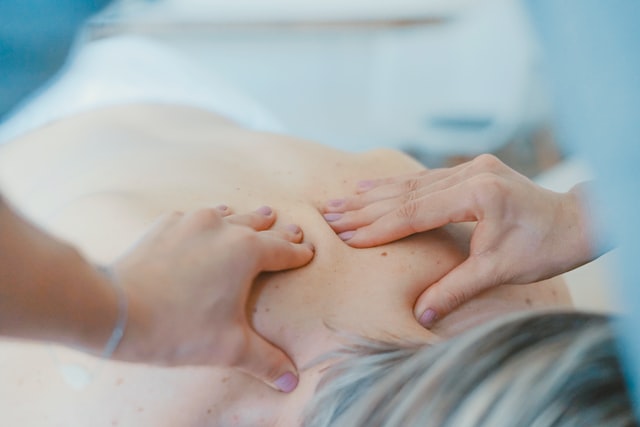The term, “massage therapy” is used to refer to different forms of massage used to relieve a range of physical complications and needs. In all massage forms, the therapist applies pressure to knead, glide, and tap layers of muscles with their hands, forearms, fingers, elbows, and even feet.
They primarily do this to reduce muscle strain, release the buildup of tension, enhance relaxation, and alleviate pain. Massage therapy is commonly used to address anxiety and depression, unwind after a stressful day, enhance blood flow, energize the spirit, and treat back pain. It can also be used to rehabilitate sports injuries and to help with general wellness.
Let’s dive deeper into how massage therapy works, and how therapists use it to treat certain conditions.
How Massage Therapy Works
Massage is the definitive mind-meets-body therapy. It generally utilizes the natural effect of touch to deliver both physical and mental benefits. Because even simply a basic touch offers comfort to the body, the subtle and delicate touch and movement from the fingers, hands, forearms, and elbows of an experienced professional therapist may offer more than just comfort.
And this is why a massage therapy session aids to alleviate state anxiety (reaction to a certain scenario), heart rate, and blood pressure. Multiple sessions can also relieve trait anxiety (overall proneness to anxiety), pain, and depression.
Massage therapy utilizes the instinctual response of your body to touch to offer healing power. Once a subtle touch is applied to your body, your muscles will relax and tension will be calmed. As such, areas experiencing a lowered range of motion and movement are usually stretched and get enhanced mobility.
For instance, you might be a patient who is recovering from a sports injury. In such a case, receiving a massage will significantly enhance the recovery time by improving the flexibility of the injured limb. Athletes preparing for strenuous exercises or muscle limbers can also benefit from massage therapy. It essentially leaves them feeling de-stressed, rejuvenated, and with a reduced risk of tearing muscles.
With massage therapy, your body achieves enhanced blood and lymph circulation. In turn, this promotes faster healing and recovery from injuries. And with better blood circulation, the nervous system calms, your heart rate is reduced and blood pressure is lowered. Improved circulation will also boost your immune system, curbing potential diseases while strengthening the immune system for quicker recovery from a present illness.
Massage therapy activates the lymphatic system—which primarily serves as part of your natural defense system. As a result, it helps the body to eliminate toxins and wastes and facilitates natural healing mechanisms. A specialized form of massage known as lymphatic drainage massage is particularly beneficial for people recovering from cancer treatments to ultimately help reduce toxins and general stress.
Massage helps alleviate chronic low-back pain, specifically for patients who aren’t responding to traditional treatment. Once applied, it boosts function and alleviates chronic pain symptoms. It’s also beneficial in those with advanced cancer and in patients with chronic neck pain, where it aids to ease pain and improve mood.
Uses of Massage Therapy
Massage therapy can specifically be used to:
- Alleviate chronic pain caused by rheumatoid arthritis, osteoarthritis, fibromyalgia, and pain associated with childbirth.
- Improve behavioral patterns in children with autism.
- Relieve migraines and chronic headaches.
- Improve digestive function and help with digestive disorders.
- Improve lung function in asthma patients.
- Reduce anxiety and pain in heart surgery patients.
- Relieve stress-associated insomnia.
- Manage glucose levels in diabetic patients, and ultimately improve their quality of life.
- Lower instances of anxiety and depression in mental health patients.
- Relieve temporomandibular joint-associated pain.
- Help cancer patients to feel relaxed, alleviate pain, and improve their immune function.
Massage therapy is a vital form of holistic healing that needs to be carried out by a licensed therapist. It can help to alleviate pain and stress, rehabilitate injuries, enhance relaxation and circulation, and promote the general well-being of patients. Accurately manipulating multiple soft tissues and muscles, touching and applying the right pressure to revitalize intricate structures can encourage your body’s natural healing power and improve one’s recovery path from a range of health complications.
